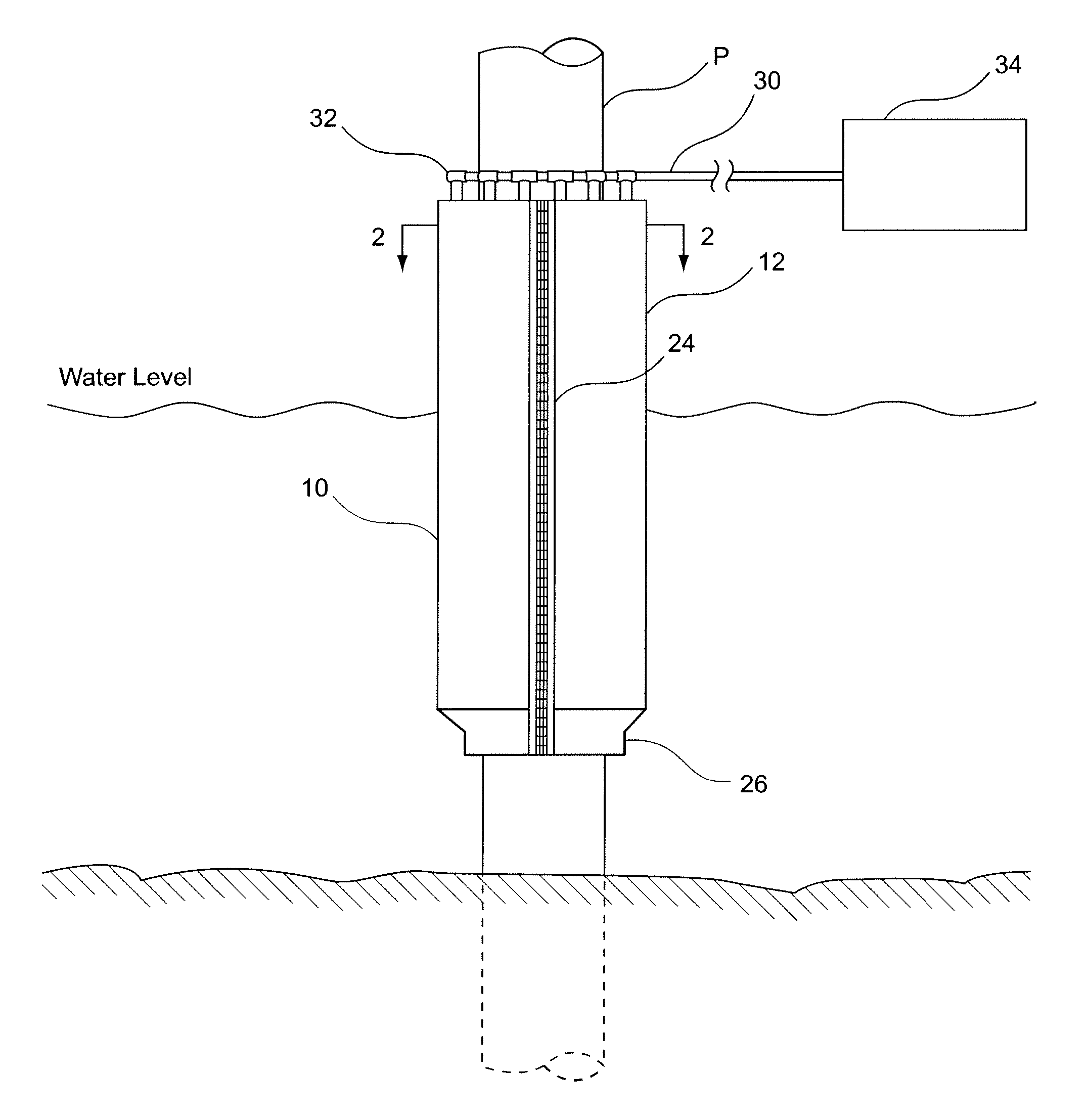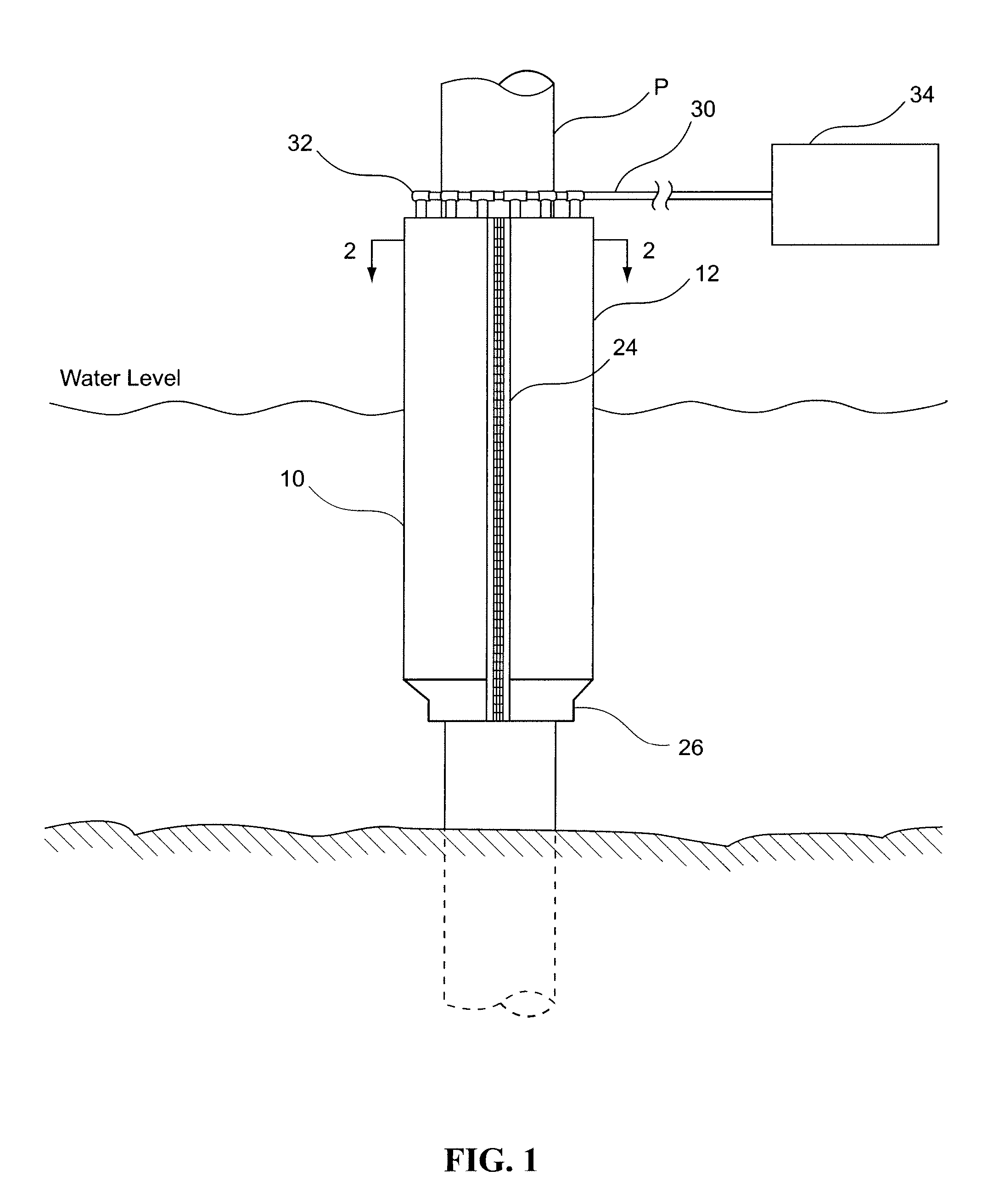Sound attenuating sleeve for use on a piling
a sound attenuation and sleeve technology, applied in the direction of instruments, foundation engineering, construction, etc., can solve the problems of reducing the efficacy of the system, affecting the safety of marine life, and requiring time-consuming set-up, so as to reduce the cost of manufacturing, reduce the risk of injury or death, and reduce the effect of sound and/or shock waves
- Summary
- Abstract
- Description
- Claims
- Application Information
AI Technical Summary
Benefits of technology
Problems solved by technology
Method used
Image
Examples
example 1
Testing of Hollow Plastic Spheres for Use in Sound Attenuation Sleeve
[0062] Hollow plastic spheres with diameters of approximately 1.5 inches (˜38.1 mm), 2.75 inches (˜69.9 mm), and 4.5 inches (˜114.3 mm) were selected for use in the sound attenuation sleeve based on the following data and analysis of the plastic spheres' ability to withstand pressure or collapse strength. These plastic spheres were as provided by McMaster-Carr and Product Components Corp.
[0063] To initially select which spheres were to be tested for collapse strength, the optimal diameter to attenuate sound at specific frequencies was estimated and their ability to reflect sound from the surface of the hollow plastic spheres. Maximum sound attenuation will occur when the interfering medium has a dimension approximately equal to multiples of ½ the wavelength of the sound generated. At dimensions of ¼ wavelengths of the sound, amplification can occur. This is analogous to the air gap to nullify the sound.
[0064] To...
example 2
Construction and Testing of Sound Attenuation Sleeve for Attenuation of 10 kHz Frequency
[0068] Based on the test results in Example 1, hollow plastic spheres with diameters of 1.5 inches (˜38.1 mm), 3 inches (˜76.2 mm), and 6 inches (˜152 mm) (all from McMaster-Carr) were selected for use in the sound attenuation sleeve. The sizes used in the fabricated sound attenuation sleeve were slightly different from those tested in Example 1, primarily because of availability and a desire to attenuate lower frequencies as shown in Table 1.
[0069] The sound attenuation sleeve was constructed according to the embodiment illustrated in FIGS. 5-8.
[0070] A simulation of high frequency sound generation was performed to assess the ability of the sound attenuation sleeve to attenuate transmission at 10 kHz. Testing was performed at the Chase Ocean Engineering Lab at the University of New Hampshire using their large tank (12.2 m×18.3 m×6 m depth). This tank afforded the spatial characteristics requi...
PUM
 Login to View More
Login to View More Abstract
Description
Claims
Application Information
 Login to View More
Login to View More - R&D
- Intellectual Property
- Life Sciences
- Materials
- Tech Scout
- Unparalleled Data Quality
- Higher Quality Content
- 60% Fewer Hallucinations
Browse by: Latest US Patents, China's latest patents, Technical Efficacy Thesaurus, Application Domain, Technology Topic, Popular Technical Reports.
© 2025 PatSnap. All rights reserved.Legal|Privacy policy|Modern Slavery Act Transparency Statement|Sitemap|About US| Contact US: help@patsnap.com



